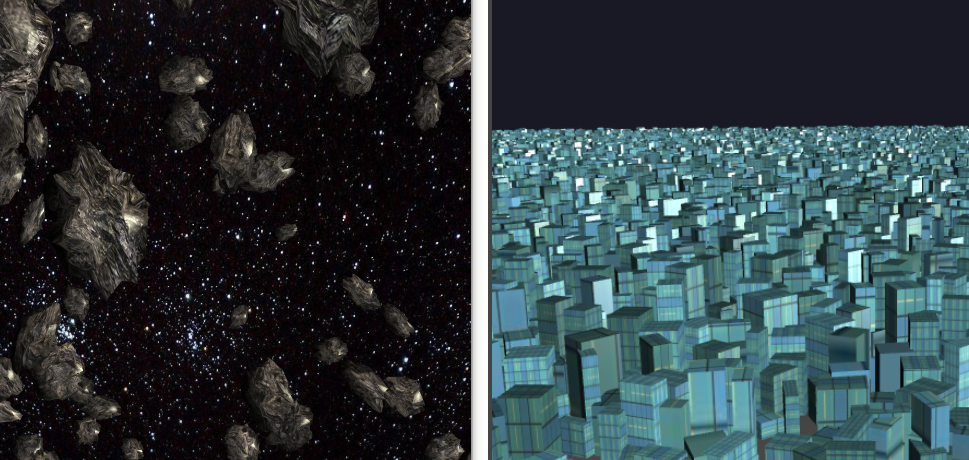An Introduction To The Solid Particle System
The Solid Particle System, SPS, is a single updatable mesh rendered with one draw call. It is built by combining multiple copies of one or more model meshes which become the particles of the system. Once the SPS is built, it has the same properties as any other Babylon.js mesh - no more, no less. It can be scaled, rotated, translated, lit, textured, etc.
As a system of particles, it provides some methods to manage the particles. However, unlike the standard particle system, it provides no built-in behaviors. It has no emitters, no particle physics, no particle recycler nor particle movement. You have to implement your own behaviors.
Once you have a mesh model, or models, as a basis for the particles you follow these steps
- First, create your SPS with
new SolidParticleSystem(name, scene); - then, add a number of particles to the SPS from a mesh model with
addShape(model, number); - redo this as many times as needed with any model;
- When done, build the SPS mesh with
buildMesh().
Your SPS is then ready to manage its particles by
- initiating their positions, colors etc. with
initParticles(); - update the SPS and draw it with
setParticles().
When you want to animate the particles by changing their properties over time you need to
- define their individual behavior with
updateParticle(particle); - call
setParticles()within the render loop.
Let's create an example
const SPS = new SolidParticleSystem("SPS", scene); // scene is requiredconst sphere = BABYLON.MeshBuilder.CreateSphere("s", {});const poly = BABYLON.MeshBuilder.CreatePolyhedron("p", { type: 2 }, scene);SPS.addShape(sphere, 20); // 20 spheresSPS.addShape(poly, 120); // 120 polyhedronsSPS.addShape(sphere, 80); // 80 other spheressphere.dispose(); //free memorypoly.dispose(); //free memory
const mesh = SPS.buildMesh(); // finally builds and displays the SPS meshAt this stage, all the particles are displayed at the origin. So to separate them, we need to initiate some properties. Access to the individual particles is through the particles array, and the length of which is given by nbParticles.
We setup the function to initiate the particles
// initiate particles functionSPS.initParticles = () => { for (let p = 0; p < SPS.nbParticles; p++) { const particle = SPS.particles[p]; //Place particles at random positions with a cube particle.position.x = BABYLON.Scalar.RandomRange(-50, 50); particle.position.y = BABYLON.Scalar.RandomRange(-50, 50); particle.position.z = BABYLON.Scalar.RandomRange(-50, 50); }};then call it to apply the initiation, followed by setParticles to actually reconfigure the SPS mesh geometry and vertex data
//Update SPS meshSPS.initParticles();SPS.setParticles();A basic SPS: A Basic Solid Particle System Colored Green: Green Colored Solid Particle System With Texture: Solid Particle System With Textures
As well as position you can also set properties such as color or uv values. More on managing particles later in this section
Color individual particles: Individually Colored Solid Particles Texture individual particles: Individually Textured Solid Particles
While it can be useful to have an SPS that will not change, for example to represent an asteroid field or city buildings

there is much more you can do with an SPS.